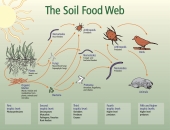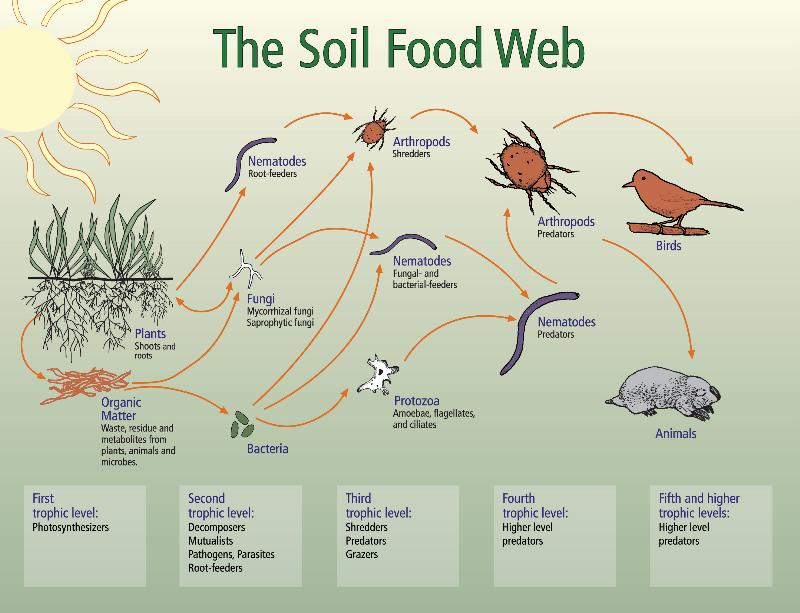The soil food web is complex and fed by organic matter such as decaying plants, animals, and microbes as well as nutrients released by living plant roots. The organic material is digested by bacteria, fungi, and other life forms, which are in turn eaten by worms, insects, and spiders.
"Soil organic matter" includes all the organic substances in or on the soil. Here are terms used to describe different types of organic matter.
What feeds the soil organisms???
Here's living organisms, dead organic material (plants or animals), active fraction organic matter 🤔🤔🤔, labile organic matter, root exudates, POM/LF organic matter, lignin, recalcitrant organic matter, humus or humified organic matter.
The living component of soil, the food web, is complex and has different compositions in different ecosystems. Management of croplands, rangelands, forestlands, and gardens benefits from and affects the food web. The next unit of the Soil Biology Primer, The Food Web & Soil Health, introduces the relationship of soil biology to agricultural productivity, biodiversity, carbon sequestration and to air and water quality. The remaining six units of the Soil Biology Primer describe the major groups of soil organisms: bacteria, fungi, protozoa, nematodes, arthropods, and earthworms.
Do you know that there's a way to feed the soil food web? 😁😁😁
Here are 5 ways according to
The Compost Group 🌱🌱🌱
Add organic matter like compost, compost tea, and organic mulchesManage nutrients by adding amendmentsUse cover crops to diversifyNo tilling and avoid compaction, let it growSay bye to -cides and commit to organic
And this all starts if you start COMPOSTING or why not let them help you to COMPOST. Start by dropping of your food scraps. Go to this
LINK to know more 😉😉😉



